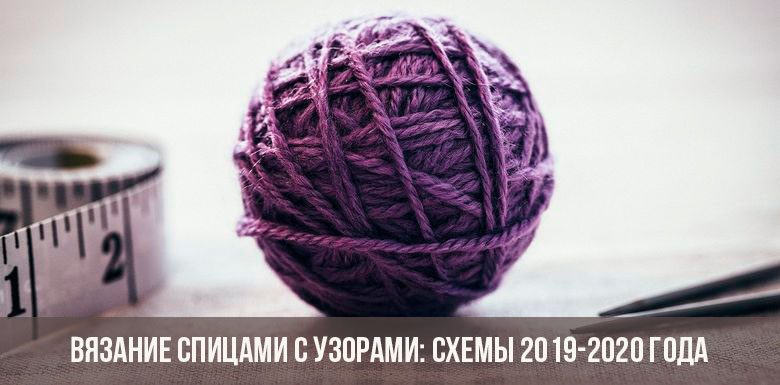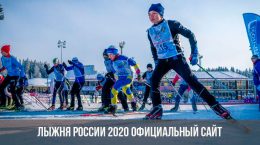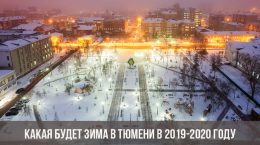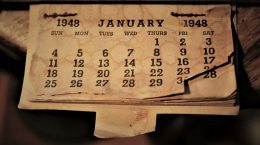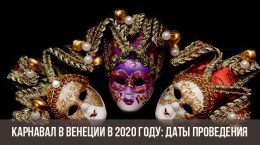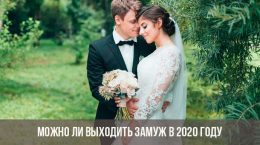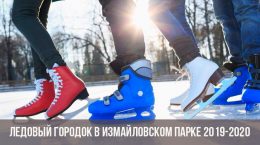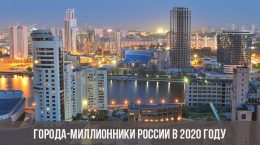Content [Hide]
In the cold season, cozy handmade items are especially good. Craftswomen, who have mastered knitting, urgently need patterns of fashionable winter patterns - 2020 to create new masterpieces for themselves and their loved ones. Sweaters, sets of hats and scarves, warm mittens - all this will be in demand and very relevant.
Winter fashion trends
The trend for natural beauty and carefully thought-out negligence could not but affect the handmade knitted things. They, like no other, are able to create a unique and stylish image, devoid of even a hint of pretentiousness or artificiality.
Especially popular in the 2019 - 2020 season will be:
- oversized sweaters and sweaters, with an asymmetrically lowered shoulder or neck-boat;
- sheath or lace dresses;
- elongated cardigans and coats;
- snoods and long, voluminous scarves.
Monophonic models of concise design with embossed patterns are a priority. The most fashionable are: "patent pins", "leaves", "wave" and of course, not aging "braids" ("harnesses") in various variations.
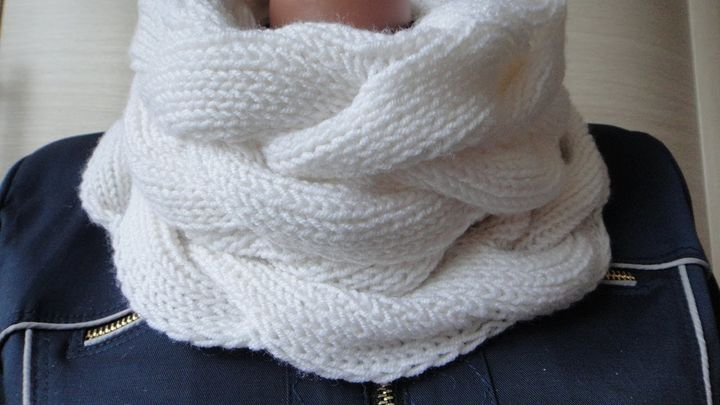
Airy and delicate fishnet products will become a must have wardrobe of any fashionista. If the translucent top or dress seems too frank, you can limit yourself to knitted inserts on the sleeves and bodice. Another trend: shortened sweaters of an adjacent cut, effectively emphasizing the figure. For them, "mesh-caramel", various kinds of "braids" and any patterns of small knitting are used. Large, voluminous loops are suitable only for oversized models, where the size and proportions of the figure are deliberately distorted.
If plain things seem too boring, you can associate a jumper or wrap with an ethnic pattern. Especially popular are Scandinavian motifs, as if created for winter colds. They use jacquard patterns in combinations: blue - white - red or black - white - blue.
Bright, unusual clothes with a gradient do not go out of fashion. Spectacular flow of flowers fascinate and invariably draw attention to the owner of such a man-made masterpiece. You can also create such beauty with your own hands, it is enough to familiarize yourself with the intricacies of yarn blending.
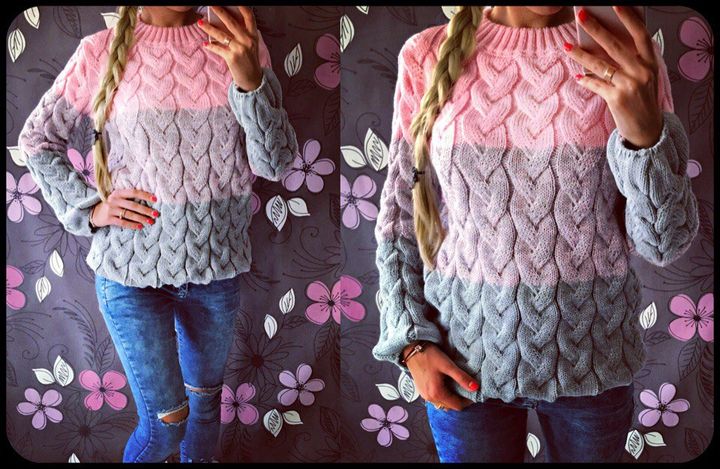
The most popular knitting patterns
Irish motifs prevail in winter fashion. Large relief patterns known as “braids” and “harnesses” are popular. Knitting patterns do not fundamentally differ, but there are many variations that allow craftswomen to diversify their wardrobe.
"Braids" can be found everywhere: on hats, snouts, sweaters and dresses. They look great on plain clothes, creating an expressive play of chiaroscuro.
The most common type of Irish pattern:
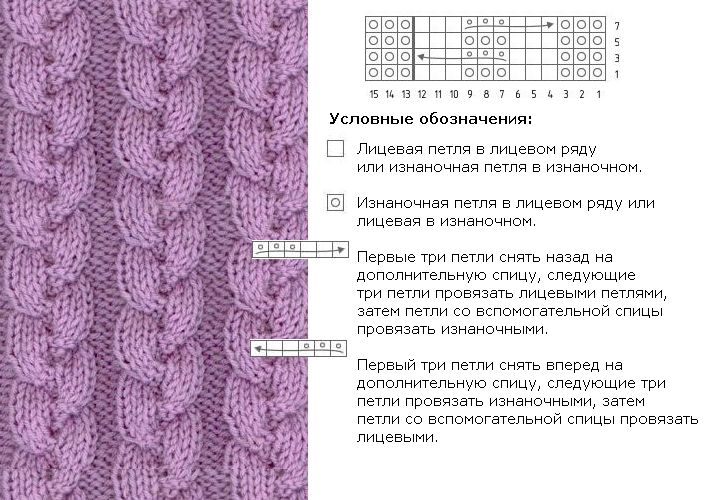
If such weaving seems too simple to someone, you can try a “curly braid”:
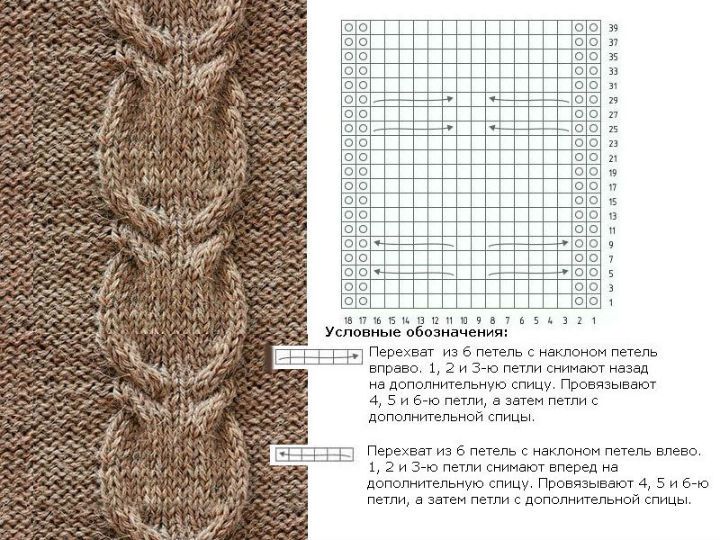
Or “butterfly” - the most spectacular version of the traditional “braid”:
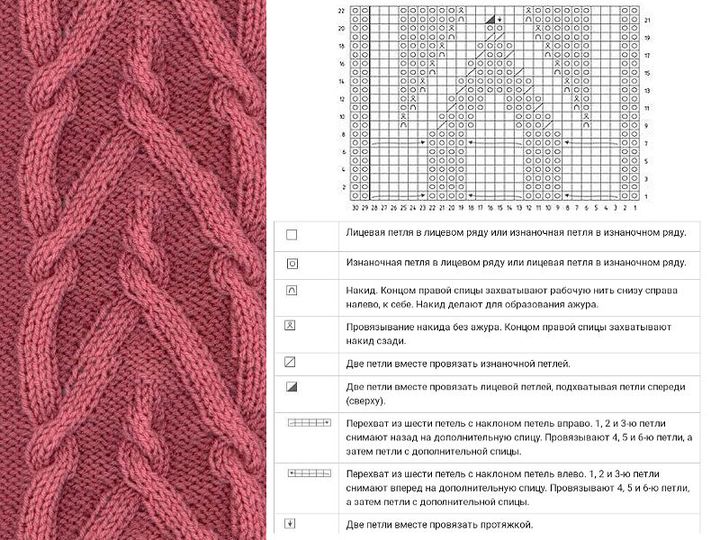
Snood was so fond of fashionistas around the world that she has not left the catwalks for several years in a row. And the new winter season will not be an exception. One of the best patterns for snuds is inclined stripes, which together with drapery give an interesting relief:
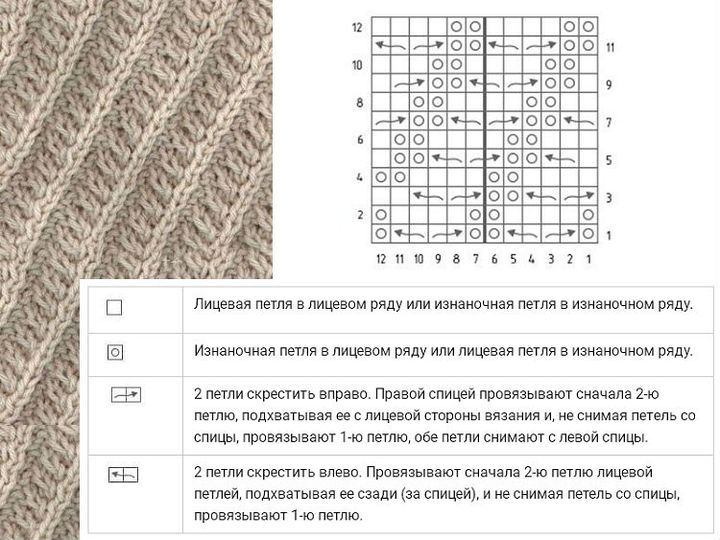
Dresses, boleros, cardigans, crochet crop tops - an example of femininity. They can be worn not only in winter, but also in the warm season.
Pattern "sea foam":
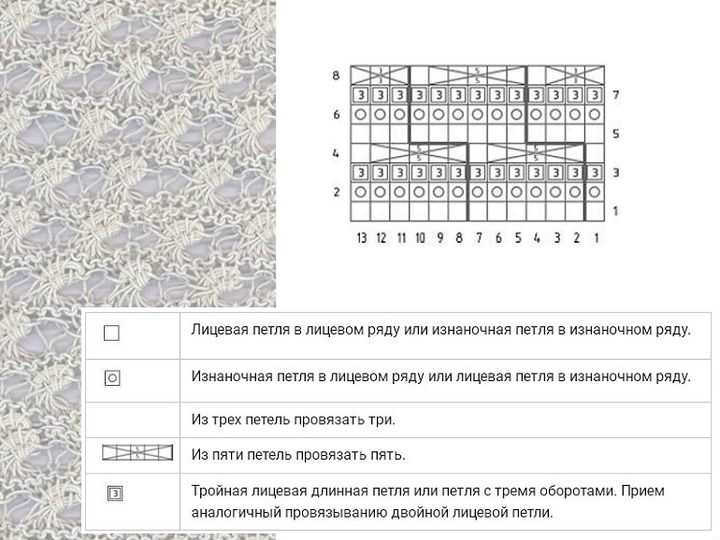
"Bells":
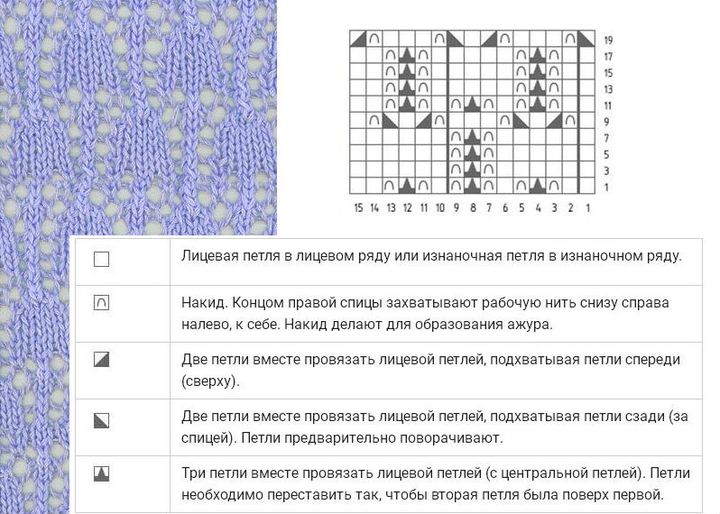
Mesh "Caramel":
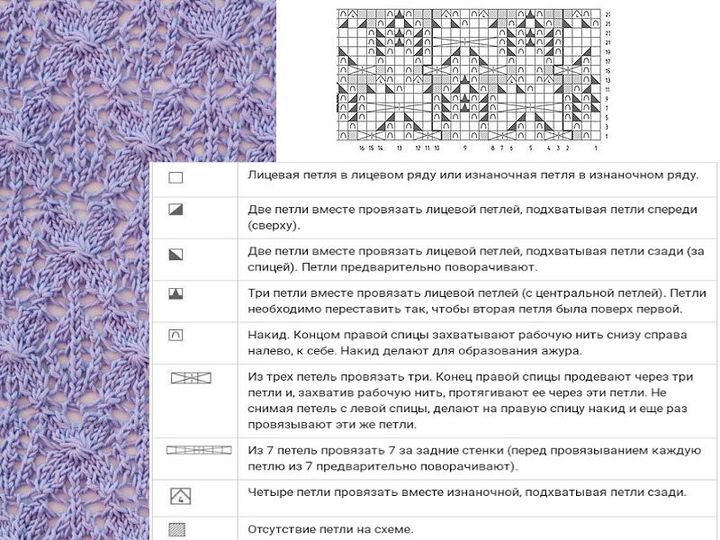
Beautiful mittens with fashionable "braids"
Even if there is not enough time for a sweater or coat, each craftswoman will have time to knit very beautiful mittens in 2019 - 2020. In frosty winters you can’t do without them, the skin of the hands noticeably suffers from low temperatures.
The main question is how to choose the right yarn and model of mittens. After all, the hands in them should be warm, soft and comfortable. In addition, wear-resistant material, designed for more than one season, is required.
Traditionally, natural wool yarn is considered the best for mittens. She will not let her hands freeze even at - 30 ºС. Suitable wool:
- sheep, especially merino breeds;
- alpacas;
- a camel.
But no matter how soft the raw material, the products from it are still obtained “prickly”, causing not very pleasant tactile sensations. To get rid of this drawback, a certain percentage of acrylic (from 5 to 50%) is added to natural wool. Products made of blended yarn are not only softer, they are more elastic, less “sit down” after washing, hold their shape better and are more durable.
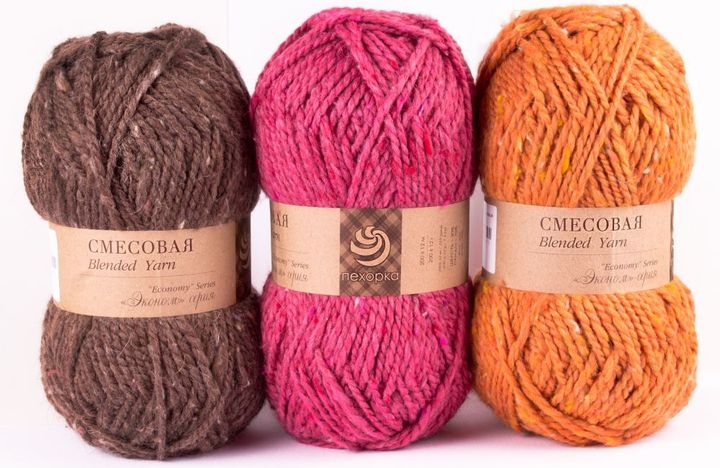
Knitted products from mohair are very relevant this season. They look elegant and stylish, sit perfectly on the arm, are presented in a wide palette of shades. The benefits of mohair are known to every craftswoman, however this delicate yarn is capricious in inexperienced hands. It is recommended to knit mittens from it in 2 layers, making a “lining” of a mixture of wool and acrylic.
Moher should not be confused with Angora. In the first case, we are talking about yarn from goat hair, in the second - from rabbit. However, the breed of both animals is called Angora, hence the confusion of concepts.
Work algorithm
For mittens, Pekhorka yarn was chosen, which is known for excellent value for money. Characteristics of the material: 30% mohair, 70% high-volume acrylic, 300m / 100g.
Required:
- about 70 g of thread;
- 4 stocking knitting needles number 3,5.
We knit cuffs with an “elastic band": 2 front loops on 2 wrong loops. The height of this part is 7 cm. We pass to the back of the hand, the pattern is "braid". We cross the first 8 loops to the left, transfer them to the auxiliary knitting needle (4 before work and 4 front knitting needles) and knit from it.
We distribute 48 loops equally on 4 knitting needles. We knit the fabric “elastic band” with a height of 3.5 cm (more can be optional). Next begins the main pattern - "braid". We transfer the loops from two knitting needles to one, as a result of which three of them remain in operation. On the first 24 loops, on the others - 12. The needles on which an equal number of loops are located on the side of the future palm.
We start the basic pattern with 24 loops. Here's how it looks in the diagram:
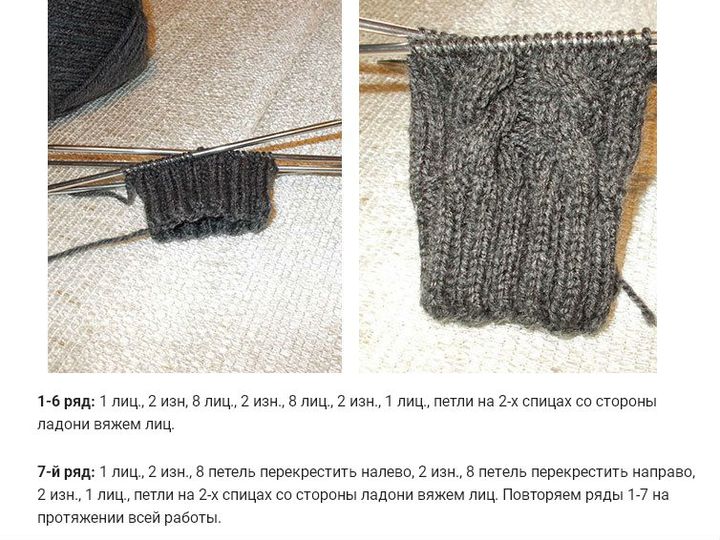
Having knitted, thus, a canvas about 10 cm high (you must definitely try on yourself, since everyone’s hands are of different shapes and lengths), we begin to make an opening under the thumb. For the left gauntlet on the knitting needle from the palm side, we knit 4 facial stitches, remove 6 from the pin and add the same amount to the knitting needle so that the same number remains, plus 2 facial ones.
For the right mittens, the described actions will be repeated symmetrically. That is, we start with 2 facial loops and end with 4.
Having reached the top of the little finger, we begin to form a toe. On each spoke we make 2 middle loops instead of the front ones. Then we begin the decrease in each row. At the end, there should be 1 loop on 4 knitting needles. We cut the working thread, put it into the needle and gently tighten the top of the mitten. All 4 loops are now securely fastened.
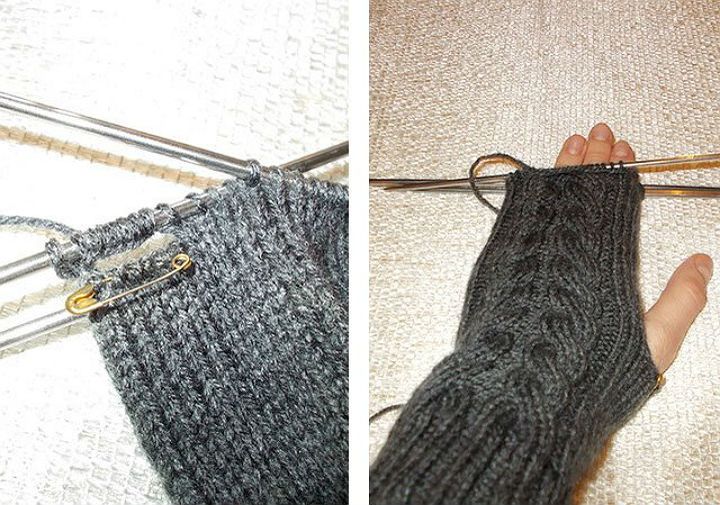
It remains to tie the thumb of the product. We transfer 6 loops from the pin to the knitting needle, add the same amount from the parallel row and collect 4 more from each side. The resulting 20 loops are distributed equally on 4 knitting needles. We knit circular rows of front loops to the desired height, after which we form a toe.
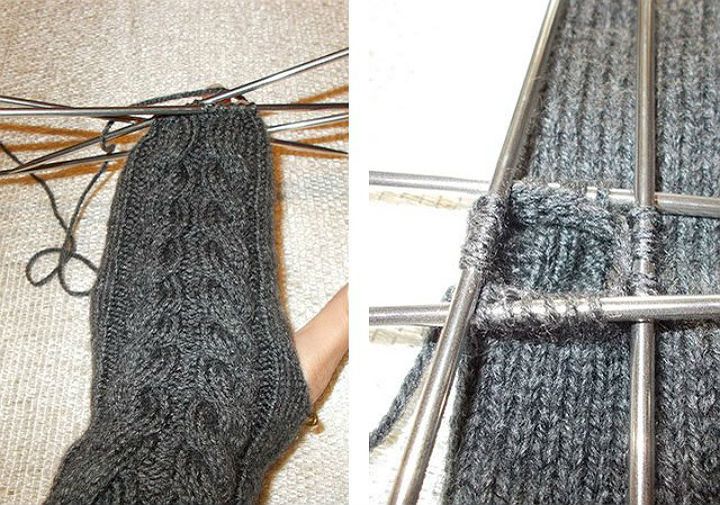
Charming melange knit hat
Knitted hats in 2020 will be at the peak of fashion. The styles have not changed much - charming hats with ears, voluminous berets, sports binns and snood-hoods are still relevant. But the first place in the top of knitted hats is rightfully occupied by cone-shaped models with a pompom.
They can be rough, large melange knitting and more feminine, decorated with a relief or jacquard pattern.Last year, such models were crowned with huge pompons made of fur, but now this trend is giving way to more elegant accessories made of yarn. They should be of medium size, so that in general the image of a fashionable woman is harmonious and proportional.
It is handmade caps that are relevant, and not soulless machine knitting. Such products look great both with sports down jackets, and with a classic winter coat or fur coat. And if it is possible to create a single set with mittens and a scarf, you need to urgently get down to business until real cold has come.
For stylish mittens decorated with "braids" a hat with a similar pattern is ideal. Coloring melange is a trendy novelty of the season.
The proposed model is designed for size S (head circumference 52 - 54 cm).
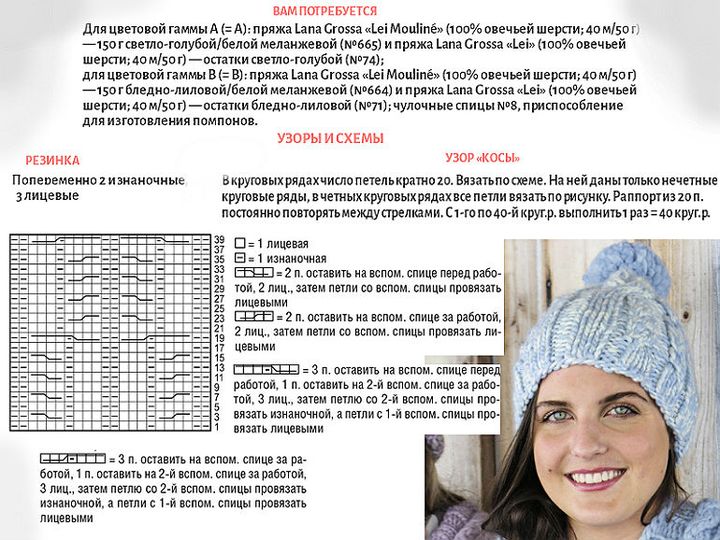
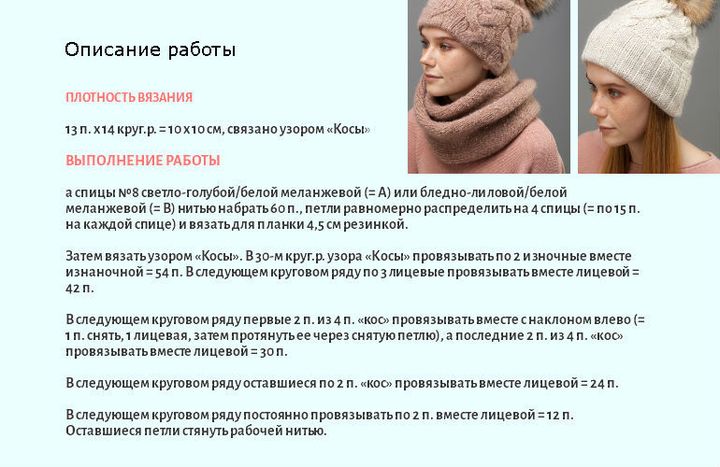
Lopapeys sweater
The Icelandic national costume was reflected in the trendy Lopapeys sweater worn by fashionistas around the world today. A distinctive feature of the ethno-model is a wide patterned coquette with floral ornaments, made in the jacquard technique. The pattern diverges radially from the neck to the shoulders, forming concentric circles. In addition to plant symbols, animal figures and abstract graphics are used.
The predominant colors are calm, muted in the north. The unusual piece of clothing received its name from sheep of the “lop” breed, from the wool of which it was originally knitted. Authentic sweaters were made only in an achromatic range, had a wide, nothing complemented neckline and straight fit. But, following current trends, modern manufacturers produce models with zippers, with a collar, a hood, as well as raglans and sweatshirts.
One thing remains the same - woolen yarn from which a sweater is knitted. Even inexperienced craftswomen will be able to replenish their wardrobe with this colorful thing without any problems. It’s easy to knit “lopapeys”: work starts from the back and continues round-the-clock without seams. Then sleeves are added. The patterned jacquard coquette is tied last. The reduction of loops is embedded in the pattern in such a way that it happens imperceptibly to the prying eye.
Familiarity with the Irish sweater is best to start with children's models. It is advisable to choose soft yarn, such as alpaca or merino with acrylic. Then the product will not “bite” and the child will surely love it.
Workshop on knitting an Icelandic sweater: video
Read also:

